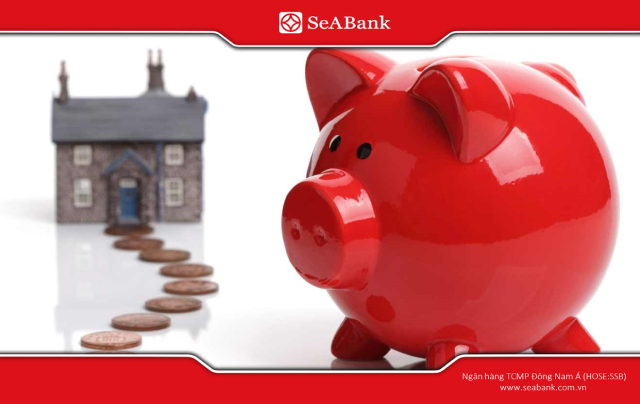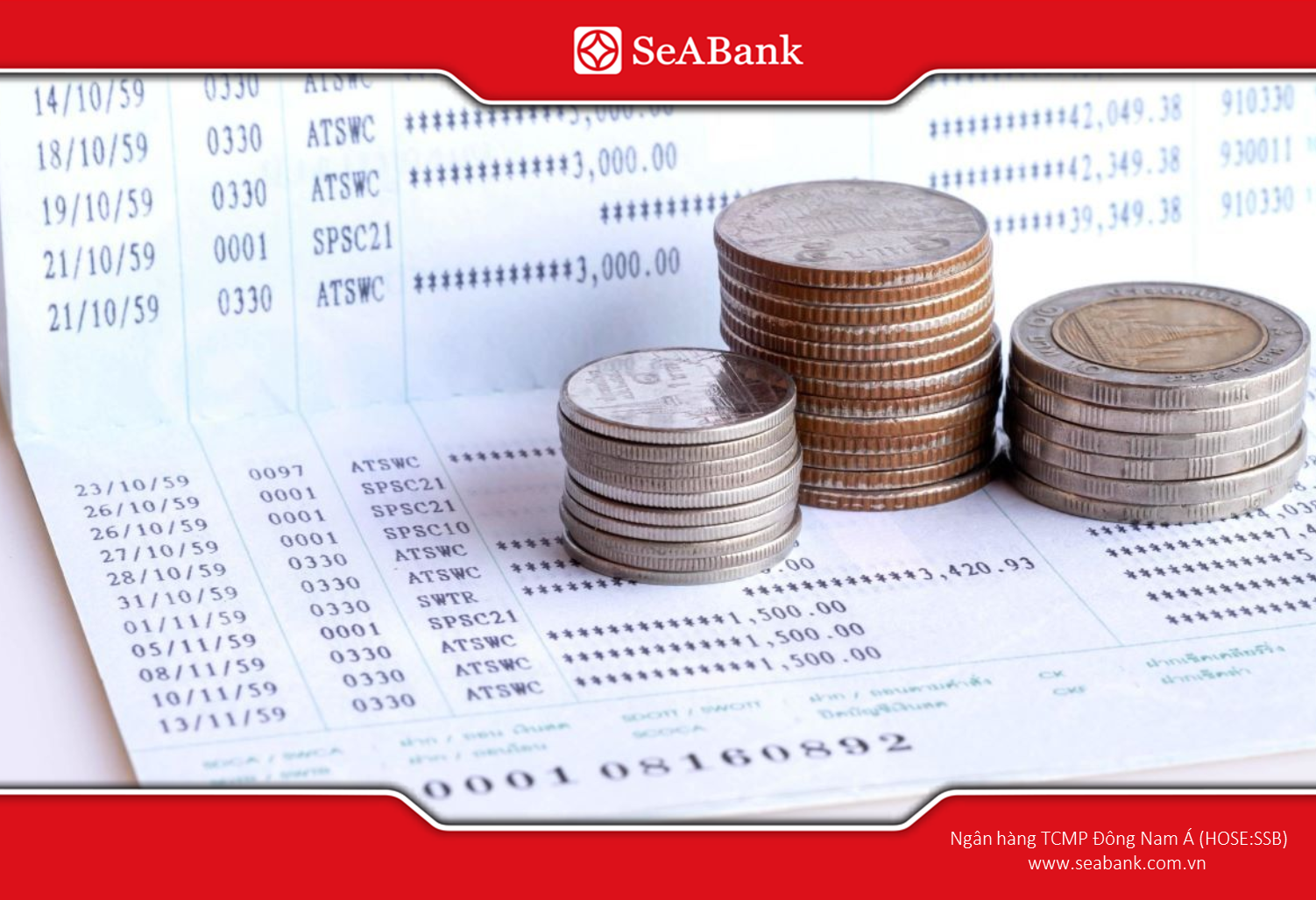News
6 steps to personal financial planning to create a sustainable life
25/04/2025
Personal financial planning is the key to helping you control your finances individual effectively and achieve long-term goals, ensuring future life. To realize your goals and dreams, let's explore the steps of smart personal financial planning in the following article!
1. 6 steps to create a detailed personal financial plan
Good financial management helps you protect your assets, stabilize your finances against all risks and achieve big goals in life. You can immediately refer to the following 6 detailed personal financial planning steps:
1.1. Step 1 - Assess your current financial situation
Understand your current financial situation Helps you have an overview of your financial resources and costs you have to pay:
- List all sources of income: Record all income from your main job, side job or other income sources within the last 1 - 3 months.
- Determine expenses: Includes fixed expenses such as rent, electricity and water, gasoline, Internet, installment payments, insurance and unexpected expenses for health, medicine, vehicle repair, household appliances, shopping or entertainment...
- Evaluate existing assets and debts: Resuming assets bThe owned (cash, bank deposits, securities, real estate, vehicles...) and debts (credit debt, bank loans, other debts...).
The financial assessment process will help you see your cash flow and find unnecessary expenses, thereby coming up with a reasonable spending plan. During this process, you can use a number of support tools such as Excel spreadsheets or financial management applications to record and analyze these data in detail and accurately.
1.2. Step 2 - Set financial goals
Setting clear and realistic goals will help you stay motivated and easily check your progress on your personal financial plan. You should choose one most important goal at a time to avoid feeling overwhelmed and focus your resources on that goal. You should set financial goals according to timelines such as short-term, medium-term or long-term.
- Short-term goal (1 year): For example, save some money to buy a new phone, go on a trip or buy a favorite item.
- Mid-term goals (1 - 5 years): For example, buying a car, paying off credit card debt, investing in a skills improvement course...
- Long-term goals (>5 years): For example, saving to buy a house, retire, build a large investment fund, create your own business...
To ensure goals are effectively achieved, you should apply the SMART principle (Specific; Measurable; Achievable; Relevant; Time-bound).
For example: “Save 100 million within 12 months to make a deposit to buy a house or complete installment payments for a 3 billion VND house within 5 years" instead of just saying "Save money".

1.3. Step 3 - Set up a budget and detailed spending plan
Building a detailed spending plan will help you effectively allocate your income to meet essential needs, save and invest for the future.
There are many methods you can apply to appropriately allocate income to each category of life as follows:
50/30/20 rule
- 50% for essential expenses: rent, food, insurance, travel, installments...
- 30% for personal expenses: entertainment, travel, shopping and other hobbies.
- 20% for savings and investment funds.
Rule of 6 jars
- 55% of necessities: Essential expenses such as food and housing.
- 10% entertainment: Fun activities and travel.
- 10% learning: Invest in education and personal development.
- 5% charity: For helping others.
- 10% long-term savings: To achieve big goals like buying a house or car.
- 10% investment: Create a passive income source.
After allocating detailed budgets, you need to recalculate estimates and actual spending to see if they are reasonable or not, thereby eliminating unnecessary expenses or adjusting expenses that can be more economical.
Besides saving, add investments to your financial plan to increase your assets. Depending on your goals and risk tolerance, you can choose the following channels:
- Stock: Investing in stocks of reputable companies brings high profits but comes with great risks.
- Open Fund: Helps you enter the market and diversify your investment portfolio without having to manage it yourself. For example, investment-linked insurance products or financial investment funds from banks.
- Real estate: Suitable for long-term, stable investment, especially for projects with high profit potential.
- Yellow: Safe and appropriate choice to preserve asset value during inflationary periods.
In addition, determine the time to complete the goal to create a clear plan, from monthly savings levels, specific investment strategies to the necessary flexibility when encountering unexpected situations. For example, if you want to buy a house in 5 years, you need to calculate your monthly savings and consider appropriate investment channels to accelerate progress toward your goal.
1.4. Step 4 - Build a reserve fund
A reserve fund helps you respond to emergency situations such as illness, job loss or unforeseen events without having to worry financially. An ideal reserve fund should be enough for you to cover 3 - 6 months of living expenses.
For example: If your monthly living expenses are 10 million VND, fund fund The minimum reserve you need is from 30 million to 60 million VND.
You can build a reserve fund by depositing savings in the bank or making savings books to accumulate long-term finances.

1.5. Step 5 - Follow the set plan
After you have established your budget and spending plan, you need to closely monitor each expense to ensure you do not exceed your budget and avoid unnecessary expenses. Besides, you should pay attention to choosing products and services that have reasonable costs but still ensure quality, while taking advantage of incentives, coupons and focusing on purchasing during big promotions.
This process requires great patience and discipline. However, implementing a good plan will help you maintain a frugal lifestyle and sustainable investments.
1.6. Step 6 - Monitor and adjust the plan
You need to regularly check your finances (monthly, quarterly), re-determine your current situation and adjust your goals accordingly. Factors such as income, cost of living or economic fluctuations can affect your financial plan.
For example, if you set a goal of saving 20% of your monthly income but actually only achieved 15%, check the reason (e.g. travel expenses) and find a way to make up the shortfall in the next month.
You can use tools to support this process such as the Mobile banking application, which helps track transactions, plan savings and manage spending effectively. You can also refer to personal financial consulting services of reputable companies and organizations such as SeABank to receive support from a team of experts in evaluating your current plan and advising on appropriate adjustments.
2. Tools to support effective personal financial management
To create a personal financial plan and implement this plan effectively, you should use additional support tools such as modern online applications, convenient Excel spreadsheets, or traditional notebooks. Each tool has its pros and cons, making it easy to customize to your individual needs.
1 - Manage via online application
Financial management applications or Mobile banking applications of banks with spending tracking features are increasingly popular:
2 - Create your own personal financial management table using Excel
Excel spreadsheets are an effective tool in work management in all fields, including personal financial planning.
3 - Track personal finances through self-recorded books
The traditional way of recording by hand in books is suitable for those who are not familiar with using technology or want to simplify financial management:

3. Note when making personal financial plans
Personal financial planning is an important step to help you control your cash flow and achieve your financial goals. However, for this plan to be effective, you need to note:
- Don't ignore your emergency fund: An emergency fund can limit the financial burden when times get tough and keep your financial plan uninterrupted.
- Monitor spending closely: You should pay attention to tracking your daily and weekly expenses to immediately detect unnecessary expenses and make timely adjustments, helping to maintain your budget and optimize savings.
- Avoid falling into credit debt: If you do not control your credit debt well, high interest rates and the ability to borrow beyond your ability to repay can put you in a spiral of debt. You should prioritize paying off debt before spending on other items.
- Persistently implement and flexibly adjust according to the actual situation: Regularly evaluate and update financial plans according to income situation and actual goals.
- Avoid investing without fully understanding the risks: Forms of investment such as stocks, real estate, or open funds all have a certain level of risk. You should only invest when you clearly understand the risks, choose a channel that suits your financial goals and consult with experts when needed.

4. SeABank accompanies you in personal financial management
Or 30 Years of operation, SeABank is proud to be a bank with a solid reputation in the field of banking and finance, always accompanying customers with optimal products, services and utilities. SeABank continuously innovates products to meet the diverse financial needs of customers of all ages and industries, including many of the following effective personal financial support products:
Savings account with attractive interest rates
SeABank provides flexible savings packages, meeting the personal financial management needs of many customers such as:
- Term savings packages: Save stairs; Savings and contributions Nurturing dreams (products for children); Savings and contributions Building the future; Savings Pay interest monthly; Savings Earn interest at the end of the period;
- Non-term savings packages: Online savings; Save smart.
Flexible credit service, high limit
Credit services at SeABank are always highly appreciated for their competitive interest rates, high and flexible loan limits, helping to reduce financial pressure for customers to the maximum. SeABank's outstanding credit products:
- Loans to buy, build, and repair houses - SeAHome
- Consumer loans with collateral - SeAFlex
- Car loan - SeACar
- Loans for individuals and businesses - SeAPRO
- Loans for Teachers, Civil Servants, and Public Employees
- Overdraft loans without collateral
- Loans to the Women's Union
- Installment Loans
SeAMobile application - free personal financial management tool
SeABank has always been a pioneer in applying digitalization to banking and financial services with the typical product SeAMobile. SeAMobile application helps customers manage finances easily:
- Manage cash flow effectively: Track income, expenses, and transactions in real time.
- Personal financial planning: Tool to automatically analyze and propose optimal savings solutions.
- Set a savings goal: Set a plan and receive periodic notifications to ensure you stay on track with your goals.
If you are looking for an effective personal financial management solution, visit now Website of SeABank or contact Hotline for detailed advice!

By managing your finances consistently, you can minimize risk and enjoy life more fully. Start personal financial planning today with SeABank - a reliable companion with diverse financial products and smart management solutions, helping you conquer all goals in life!
Related News
[Detailed answer] Why does online savings have higher interest rates? 31/10/2025
What is the maturity date of a savings book? All the information you need to know from A–Z 31/10/2025
5+ things to know about closing bank savings books 31/10/2025
Can I borrow more while paying installments? Detailed answers 31/10/2025
What is a bank installment loan? Experience in safe borrowing, low interest rates 31/10/2025
![[Detailed answer] Why does online savings have higher interest rates?](https://cloud-cdn.seabank.com.vn/seabank-web/tai-sao-gui-tiet-kiem-online-lai-suat-cao-hon.png)
[Detailed answer] Why does online savings have higher interest rates?
Why online savings have higher interest rates is a question of many customers. Refer to this article immediately for answers and choose the appropriate form.
31/10/2025
Read more

What is the maturity date of a savings book? All the information you need to know from A–Z
Join SeABank to learn what savings book maturity is, how to calculate, process and important notes to optimize interest rates and protect rights.
31/10/2025
Read more

5+ things to know about closing bank savings books
Join SeABank to learn clearly the concept, process and secret to effectively closing bank savings books to optimize interest rates and take financial initiative.
31/10/2025
Read more







